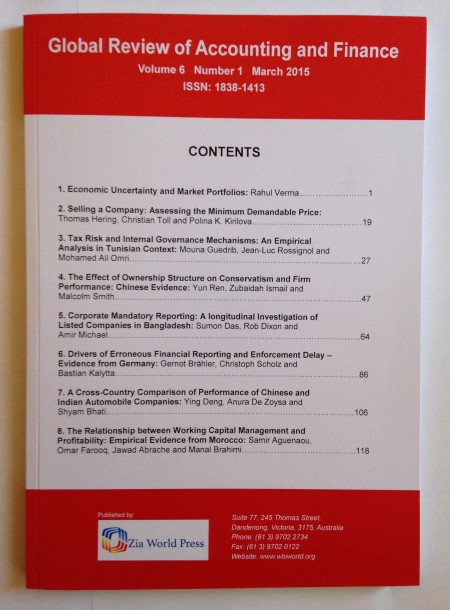Measuring and Explaining the Extent of Corporate Propping Transactions: Evidence from China

Global Review of Accounting and Finance
Vol. 5. No. 1. , March 2014, Pages: 76 – 92Measuring and Explaining the Extent of Corporate Propping Transactions: Evidence from China
The practice of using related-party transactions (RPTs) to prop up a firm’s earnings or liquidity by its controlling shareholders creates governance and market-distortion issues. This study has two objectives: (i) to develop an improved measure of propping based on Jensen and Ruback’s (1983) theory of ‘market for ownership control’; (ii) to determine the extent to which controlling shareholders are able to capture directors and top executives in order to facilitate the carrying out of propping transactions. Models are developed and empirically tested for all listed companies in China in 2010, using data from the CSMAR database. Results reveal significant factors that create a market for ownership control and, hence, propping conditions, as well as significant board governance characteristics that facilitate propping. This paper provides a new approach to modelling the regulatory and market conditions and governance characteristics that could be applied by regulators and minority shareholders in predicting the phenomenon of propping.JEL Codes: M48 and N25
